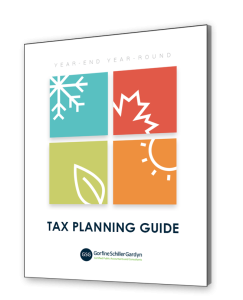In part one of a two part podcast series, Scott Rodgville, an Officer at GSG, speaks with Matt Cellini, a Partner and Senior Financial Advisor with Greenspring Advisors, about the fiduciary roles and responsibilities involved with forming a successful retirement plan.
Since the founding of the firm, Greenspring Advisors has served as a fiduciary.
With a focus in investment guidance for institutional clients as well as wealth management for high net worth individuals and endowments, Greenspring has a strong understanding of the value of fiduciary responsibilities.
A fiduciary advisor position allows companies and participants to ensure their retirement and investment plan is on the right track. A fiduciary’s duty involves educating clients to understand governance from a retirement plan, especially as the landscape continues to evolve.
Serving as a fiduciary of a retirement plan is a critical role. Often times, participants in retirement plans rely on the decisions that are made by the companies and committees that oversee the plans. In most cases, the 401(k), 403(b) or pension plan is the sole retirement source outside of social security that most participants utilize.
A fiduciary helps companies oversee that their plan is relative to fee analysis and benchmarking. This involves explaining the economics of the way their service providers charge their fees along with searching and supporting front vendor management. If there are issues with recordkeepers or third party administrators (TPA), a fiduciary will become closely involved with the relationship manager.
Plan design and consulting is an essential responsibility as a fiduciary. It’s vital to have a plan design in place by plan sponsors that is data driven and includes the specific demographics of companies and committees.
It’s important to note that a company cannot delegate their entire fiduciary responsibilities. Recordkeepers, TPAs and attorneys are not considered fiduciaries on the plan. You must be named as a fiduciary in order to have the ability to edit, offer plan design, create fee structures, fund changes or provide investment advice for a fee.
There are two types of fiduciaries referenced in sections of the Employee Retirement Income Security Act of 1974 (ERISA):
- ERISA 3(21) Fiduciary – A 3(21) advisor is a non-discretionary fiduciary. This fiduciary provides advice to clients, but ultimately the client must execute the decisions to the provider.
- ERISA 3(38) Fiduciary – A 3(38) advisor is a discretionary fiduciary. In this role, the fiduciary has the authority to contact the recordkeeper and make the investment changes on behalf of the client.
Stay tuned for part two of the series, which discusses the value that various service providers provide for making a successful retirement plan, and much more!
Categories: Podcast, Audit & Accounting, Employee Benefit Plans, Retirement Planning




